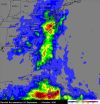(Press-News.org) Voters across the country are entering the season of ballot measures. In Washington, this fall's nine statewide ballot measures include two competing liquor initiatives, a bond measure for school upgrades, and a much-debated push for the state's first income tax since the 1930s.
Into this fray enters an online experiment created by the University of Washington in partnership with the Seattle civic nonprofit CityClub. The Living Voters Guide (www.livingvotersguide.org) aims to spark a civil and objective discussion among Washington voters by letting them work together to write their own voters guide.
The guide borrows elements of Twitter's rigid character limit and Google's ranking system to try to get people of different views to learn from one another.
"We know that people have tuned out because they don't trust the press, they don't trust the politicians, they don't trust government, they don't trust business. There's a trust deficit in society. And part of that is due to having few public communication experiences that allow citizens to explore issues in a constructive environment," said Lance Bennett, a UW professor of communication and political science.
For CityClub, which is devoted to promoting civic engagement, the guide is an experiment in using new technology to reach a greater diversity of voters.
"The Internet seems to be a tool that shows preliminary promise of breaking down the steadfast correlation between education level and higher economic status and political and civic engagement," said Diane Douglas, CityClub executive director. "That's really exciting."
For all its appeal, however, past experiments in digital democracy have had mixed success. Barack Obama's website, http://opengov.ideascale.com, was at one point flooded with marijuana advocates and people who questioned his citizenship. And many comments on the web are less than civil.
"The level of much of the civil discourse on the Internet is abysmal," noted project leader Alan Borning, a UW professor of computer science and engineering. "The features we've built try to nudge people toward a more thoughtful, deliberative process online."
The Living Voters Guide is a twist on the traditional voter's guide, with statements for and against. The tool takes the format of a pro-and-con list. In less than two minutes, users can choose an issue, slide a scale to indicate where they stand, and list pros and cons to support their stance, either by writing their own or picking from points added by others. Each pro or con is limited to just 140 characters, the length of a text message or Twitter update (though a longer, 500-character explanation is optional).
Users must agree to ground rules that include using civil language, representing individual views rather than those of an organization, and registering for only one account.
All this is meant to cut down on the grandstanding, trolling, flaming and other rude behavior that has become the norm on newspaper comment boards or discussion sites, as well as on gaming the system to strategically boost one point of view.
"We're exploring different ways that we might be able to allow the public's group intelligence to emerge, rather than having political discussions get undercut by extreme and sometimes malicious voices," said Travis Kriplean, a UW doctoral student in computer science and engineering who led the site's development. "We hope to see whether this particular model of large-scale political interaction creates a voter's guide that is useful and engaging for the people who helped create it."
The UW and CityClub worked to develop an interactive space that would promote discussion. The site uses a complex ranking system to move up points that were chosen by a large proportion of people who viewed them, and by people of differing opinions.
"We want to foster discussion, and the best way to do that is to prioritize the points of intersection between people with different values and ideologies," said team member Jonathan Morgan, a UW doctoral student in human centered design and engineering.
Students in UW communication professor John Gastil's political deliberation class and UW communication lecturer Kathy Gill's digital democracy class will be trying the site, and some UW students will moderate. The core developers will study the site's use as part of a research project on human-computer interaction sponsored by the National Science Foundation.
Creators say they hope the site will attract voters from across the state, from all backgrounds and points of view.
"Living Voters Guide should appeal to anybody who is confused about one or more of the initiatives," said team member Deen Freelon, a doctoral student in communication. "That's a big group of people, I think, even among educated voters."
INFORMATION:
For more information, contact Kriplean at 206-291-8331 or kriplean@uw.edu and Freelon at dfreelon@uw.edu. Borning and Bennett are out of the country but can be reached by e-mail at borning@cs.washington.edu and lbennett@uw.edu.
Contact CityClub's Douglas at 206-682-7395 or ddouglas@seattlecityclub.org.
A Seattle Times editorial on the project by Bennett, Borning and Douglas is at http://seattletimes.nwsource.com/html/opinion/2013012215_guest28douglas.html
'Living Voters Guide' invites Washington voters to hash out ballot initiatives
2010-10-05
ELSE PRESS RELEASES FROM THIS DATE:
Depression during pregnancy increases risk for preterm birth and low birth weight
2010-10-05
Clinical depression puts pregnant women at increased risk of delivering prematurely and of giving birth to below-normal weight infants, according to a report published Oct. 4 in the Archives of General Psychiatry.
Being born too soon and weighing too little at birth can jeopardize the immediate survival and long-term health of babies. Preterm birth and low birth weight are leading causes worldwide of infant and early childhood mortality, respiratory distress, neurological and developmental impairment, cerebral palsy, blindness, hearing loss and other disabilities.
Depression ...
Europa's hidden ice chemistry
2010-10-05
The frigid ice of Jupiter's moon Europa may be hiding more than a presumed ocean: it is likely the scene of some unexpectedly fast chemistry between water and sulfur dioxide at extremely cold temperatures. Although these molecules react easily as liquids—they are well-known ingredients of acid rain—Mark Loeffler and Reggie Hudson at NASA's Goddard Space Flight Center in Greenbelt, Md., now report that they react as ices with surprising speed and high yield at temperatures hundreds of degrees below freezing. Because the reaction occurs without the aid of radiation, it could ...
Research breakthrough hailed on the anniversary of gene discovery
2010-10-05
(Cincinnati, OH) – In a study published today in the Journal, Proceedings of the National Academy of Sciences, an international team of researchers based in the U.S. and UK revealed that they were able to halt the potentially lethal, breath holding episodes associated with the neurological disease Rett syndrome.
Rett syndrome is a disorder of the brain that affects around 1 in 10,000 young girls. On October 4, 1999, a groundbreaking study was published showing that the disease is caused by a spontaneous mutation in the gene methyl-CpG-binding protein 2 (MeCP2). The gene ...
TRMM satellite sees tropical moisture bring heavy rain, flooding to US East Coast
2010-10-05
A deep, stationary trough of low pressure parked over the Ohio and Tennessee valleys west of the Appalachians drew a steady stream of tropical moisture, including the remnants of Tropical Storm Nicole, up the East Coast. The results were heavy rain and flooding from Florida to the coastal Carolinas up into the Chesapeake Bay region and NASA's TRMM satellite captured rainfall from the event.
Rain first broke out across the U.S. Southeast as a slow moving front approached from the northwest. The front then became stationary along the eastern seaboard, providing a focus ...
AgriLife Research scientists complete two-year study on short-day onions
2010-10-05
UVALDE – Texas AgriLife Research scientists have recently completed a two-year study on the impact of deficit irrigation and plant density on the growth, yield and quality of short-day onions.
Deficit irrigation is a strategy in which water is applied to a crop during its drought-senstitive stages of development and is either applied sparingly or not at all during other growth stages, particularly if there is sufficient rainfall, reducing the overall amount of irrigation through the crop cycle.
According to crop production experts, the strategy is particularly helpful ...
Challenges and opportunities for improving community college student success
2010-10-05
WASHINGTON, DC, October 4, 2010—As public concern heightens over current completion rates for students at America's community colleges, a University of Wisconsin-Madison researcher has systematically examined 25 years of rigorous research in search of explanations of success and remedies for dropouts.
Sara Goldrick-Rab, Assistant Professor of Educational Policy Studies and of Sociology, points to key contributions made by institutional practices and to the important role that federal and state resources and policies play in shaping colleges' capacity to increase graduation ...
Cluster helps disentangle turbulence in the solar wind
2010-10-05
From Earth, the Sun looks like a calm, placid body that does little more than shine brightly while marching across the sky. Images from a bit closer, of course, show it's an unruly ball of hot gas that can expel long plumes out into space – but even this isn't the whole story. Surrounding the Sun is a roiling wind of electrons and protons that shows constant turbulence at every size scale: long streaming jets, smaller whirling eddies, and even microscopic movements as charged particles circle in miniature orbits. Through it all, great magnetic waves and electric currents ...
A sing-song way to a cure for speech disorder
2010-10-05
COLUMBIA, Mo. – Hindustani singing, a North Indian traditional style of singing, and classical singing, such as the music of Puccini, Mozart and Wagner, vary greatly in technique and sound. Now, speech-language pathology researchers at the University of Missouri are comparing the two styles in hopes of finding a treatment for laryngeal tremors, a vocal disorder associated with many neurological disorders that can result in severe communication difficulties.
Sound is developed in the larynx, an organ located in the neck. A laryngeal or vocal tremor occurs when the larynx ...
Chest news briefs: CPAP may cause facial changes
2010-10-05
USE OF NASAL CPAP MAY CAUSE CRANIOFACIAL CHANGES
The use of a nasal continuous positive airway pressure (nCPAP) machine for more than 2 years may cause craniofacial changes in adults with obstructive sleep apnea (OSA). Researchers from The University of British Columbia, Vancouver, BC, Canada, analyzed baseline and follow-up radiographs from 46 Japanese patients with OSA who had used nCPAP for a minimum of 2 years. Changes in craniofacial structures were assessed. nCPAP use was associated with change in the craniofacial form by reducing maxillary and mandibular prominence ...
MRI may predict continued decline in patients with mild cognitive impairment
2010-10-05
OAK BROOK, Ill. – Using advanced MRI and an artificial intelligence technique, researchers in Geneva, Switzerland, have identified a method that may help identify which individuals with mild cognitive impairment (MCI) will continue to decline, according to a study published online and in the December issue of Radiology.
"We know that about half of all individuals with early-stage mild cognitive impairment will progress to Alzheimer's disease," said lead researcher Sven Haller, M.D, M.Sc., a radiologist at University Hospitals of Geneva. "But not knowing which patients ...





